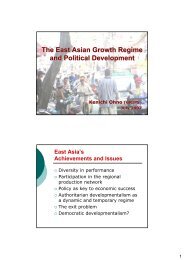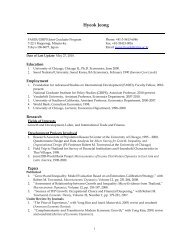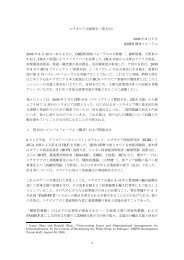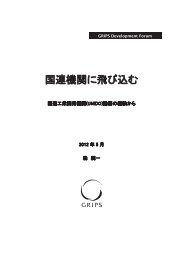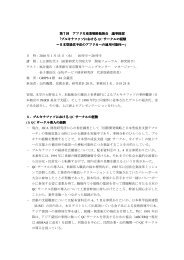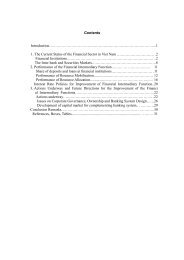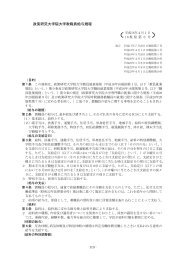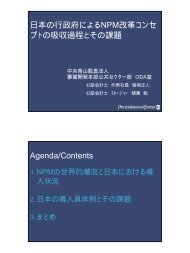Evidence from Firm-level Data in Vietnam
Evidence from Firm-level Data in Vietnam
Evidence from Firm-level Data in Vietnam
You also want an ePaper? Increase the reach of your titles
YUMPU automatically turns print PDFs into web optimized ePapers that Google loves.
In the framework of multiple periods without sunk e ntry costs, the expected profit of the firm becomeswhere−t( [ pisqis− cis( Xs, Zis| qis)s **∑ ∞ t s=tπ ( X , Z ) = E δ)](3)ittitδ is the one-period discount rate. If there is any effect of today’s production on the costs tomorrow,such as learn<strong>in</strong>g-by-do<strong>in</strong>g <strong>in</strong> the production of exports, the current export status of the firm will have someeffects on the decision to export the next period. This is because th e cost function <strong>in</strong> the function of expected* *profit now is c c X , Z , q | q ) with ∂c/ ∂q0 . The value function of the firm isit=it(t t it−1 itit it−1≠Vit* t +qTherefore, the export<strong>in</strong>g behavior of the firm will be( )*(.) = max πitYit+ δE[ V it 1(.)| q it] . (4)itYit⎧1if πit+ δEt[ V= ⎨⎩0otherwise(.) | q> 0] − δE[ V(.) | q**it+1 itt it+1 it= 0] ≥ 0(5)Now consider the case with sunk entry costs. As stated <strong>in</strong> the <strong>in</strong>troduction, entry costs are an important factor<strong>in</strong> the decision to export of firms. Costs associated with enter<strong>in</strong>g foreign market may <strong>in</strong>clude those <strong>in</strong>acquir<strong>in</strong>g <strong>in</strong>formation about the markets, <strong>in</strong> adjust<strong>in</strong>g the production process and products to satisfy foreigncustomers, or <strong>in</strong> sett<strong>in</strong>g up distribution network abroad. Most of these costs are by nature sunk. It is usuallyassumed that firms will not have to pay the entry cost if they exported <strong>in</strong> the previous period. If there are sunkcosts <strong>in</strong>volved <strong>in</strong> tak<strong>in</strong>g up export activities, a forward-look<strong>in</strong>g firm will look beyond the present period <strong>in</strong> itsdecision to export or not to export. The presence of sunk costs makes the decision rule dynamic, becauseexport<strong>in</strong>g today carries an additional option value of be<strong>in</strong>g able to export tomorrow without pay<strong>in</strong>g the sunkcosts of export<strong>in</strong>g. If we denote N be the entry cost for a firm, <strong>in</strong> the s<strong>in</strong>gle period maximization problem,its profit is as follows:~*** *π ( X , Z , q ) p q − c ( X , Z , q | q ) − N(1Y ) (6)ittitit−1=it it itit −1it− it− 1The firm will export if this profit is non-negative, that is, Y = 1 if ~itπit≥ 0 and Yit= 0 otherwise. In thedynamic maximization problem, the firm will maximize the expected value of profits by choos<strong>in</strong>g a sequencetitof export quantities∞{ q * } . In other words, the firm will maximize the follow<strong>in</strong>g:iss=tΠits−t( ( ~isYis)∑ ∞t s=t( X , Z ) = E δ π )(7)titThe form of the value function is the same as that <strong>in</strong> the case of without entry cost:V (.) = max πAnd the condition of export<strong>in</strong>g decision isit( ~*Y E [ V (.) | q ])+ δ (8)* it it t it+1 itqitYit⎧1if ~ πit+ δEt[ V= ⎨⎩0otherwise(.) | q> 0] − δE[ V(.) | q**it+1 itt it+1 it= 0] ≥ 0(9)or7



